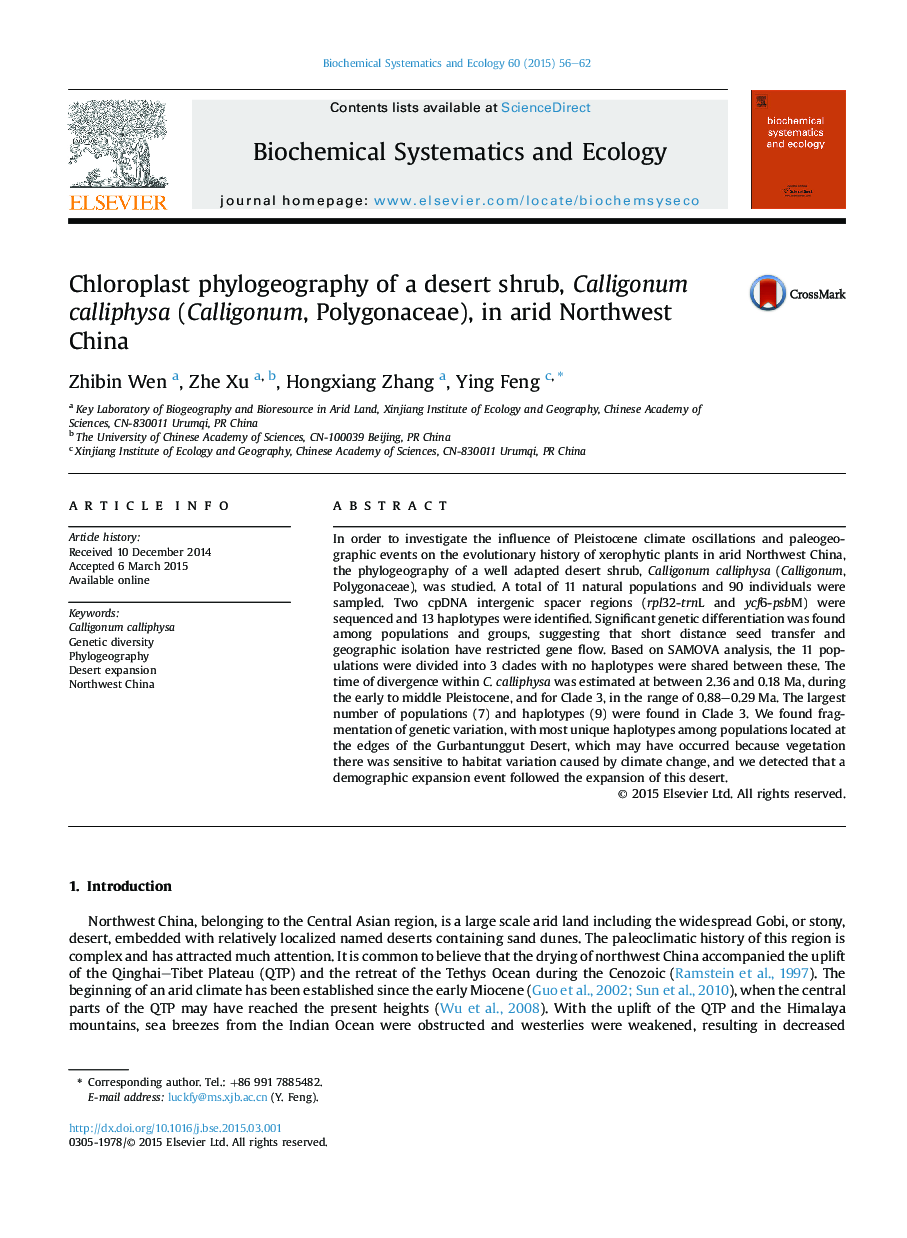| Article ID | Journal | Published Year | Pages | File Type |
|---|---|---|---|---|
| 7768058 | Biochemical Systematics and Ecology | 2015 | 7 Pages |
Abstract
In order to investigate the influence of Pleistocene climate oscillations and paleogeographic events on the evolutionary history of xerophytic plants in arid Northwest China, the phylogeography of a well adapted desert shrub, Calligonum calliphysa (Calligonum, Polygonaceae), was studied. A total of 11 natural populations and 90 individuals were sampled. Two cpDNA intergenic spacer regions (rpl32-trnL and ycf6-psbM) were sequenced and 13 haplotypes were identified. Significant genetic differentiation was found among populations and groups, suggesting that short distance seed transfer and geographic isolation have restricted gene flow. Based on SAMOVA analysis, the 11 populations were divided into 3 clades with no haplotypes were shared between these. The time of divergence within C. calliphysa was estimated at between 2.36 and 0.18Â Ma, during the early to middle Pleistocene, and for Clade 3, in the range of 0.88-0.29Â Ma. The largest number of populations (7) and haplotypes (9) were found in Clade 3. We found fragmentation of genetic variation, with most unique haplotypes among populations located at the edges of the Gurbantunggut Desert, which may have occurred because vegetation there was sensitive to habitat variation caused by climate change, and we detected that a demographic expansion event followed the expansion of this desert.
Related Topics
Physical Sciences and Engineering
Chemistry
Organic Chemistry
Authors
Zhibin Wen, Zhe Xu, Hongxiang Zhang, Ying Feng,
